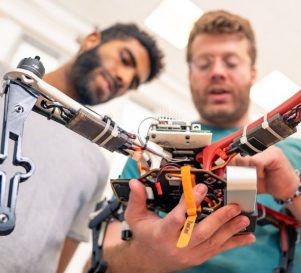A brief overview of the Ohio State College of Engineering (COE) will be presented, with the emphasis on the strategic research pillars and the research strengths and priorities. The focus will be on the COE’s research centers that form the operational core of the COE’s research mission. The opportunities for collaborative research will be briefly discussed. In addition, a newly established SMART Center at the OSU’s Transportation Research Center will be discussed to offer some insights into smart mobility and autonomy research and the COE’s capabilities in the area of autonomous vehicle testing.
Next, an overview of research in broad areas of Positioning, Navigation and Timing (PNT) performed at COE, with the emphasis on the research program of the Satellite Positioning and Inertial Navigation (SPIN) Lab, will be discussed. Over the past 15+ years, SPIN Lab has completed over 60 research projects sponsored by the Federal and State governments and the industry, with a total budget of over $22M. The primary areas of research are GPS/GNSS algorithms, mainly high-accuracy static and kinematic network-based solutions including the PPP technique, GNSS error modeling, and GNSS integration with inertial technology. As the demand for ubiquitous navigation has been steadily growing, alternative navigation methods based on multi-sensor systems with increasingly unconventional techniques, such as Artificial Intelligence (AI)-based, image and terrain-based solutions started to dominate SPIN Lab’s research portfolio over the last more than a decade. More recently, collaborative navigation combined with the image-based approach and AI techniques has been the driving force of the SPIN Lab’s research, as these technologies are expected to support the key emerging applications, such as autonomous vehicles, UAS swarms, indoor and transitional navigation, and general mobility in smart cities, etc.










